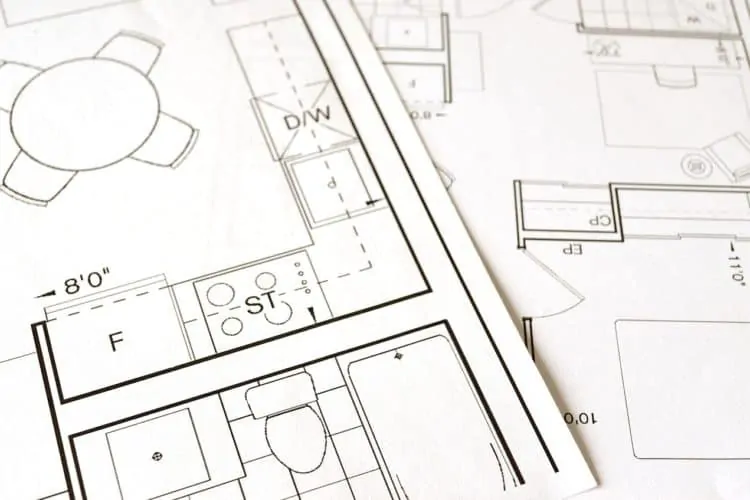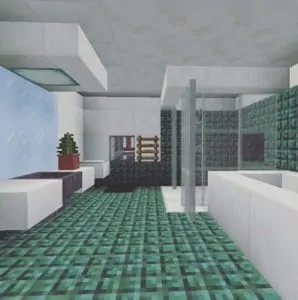
How Much Does a Bonus Room Cost
 There are many reasons to add a bonus room to your house. The addition of a bonus room helps to increase square footage and property value, makes living space for additional family members, provides additional storage space, and gives your home some new life. But regardless of why you’re choosing to add a bonus room to your house, one thing is certain: it will be a significant investment in your future and the future of your home, with a significant associated cost. If you’re wondering “how much does a bonus room cost,” read on.
There are many reasons to add a bonus room to your house. The addition of a bonus room helps to increase square footage and property value, makes living space for additional family members, provides additional storage space, and gives your home some new life. But regardless of why you’re choosing to add a bonus room to your house, one thing is certain: it will be a significant investment in your future and the future of your home, with a significant associated cost. If you’re wondering “how much does a bonus room cost,” read on.
Average Cost of Adding a Bonus Room to Your House
Like any major home improvement, the costs of home extensions are significant. Based on the most recent data, the national average cost for building a home addition or extensions is about $42,000, with the range extending from $21,000-$65,000.
Some extensions on the smaller scale, and in which there was a setup primed for new construction, have been reported to have cost less than $10,000.
At a minimum, you should expect that adding a bonus room will cost at least $15,000-$20,000, but you should expect to spend more than the minimum, especially depending on the size of your addition.
Factors that Affect the Cost of Adding a Bonus Room
Of course, there are many individual factors that affect the cost of adding a bonus room that can sway this average number up or down.
Probably the biggest factor is the size of your bonus room, specifically square footage. According to Salter Spiral Stair, the approximate cost of adding a bonus room (specifically over your garage) is approximately $350 per square foot. So, the more square footage you want to add, the more you can expect your bonus room to cost
Another factor that impacts how much your bonus room will cost is the materials that you decide to use. There are standard materials that will have to be used as part of almost every bonus room addition project, such as insulation and standard building materials. But costs can creep up depending on how you decide to decorate and furnish your finished room. For example, what kind of flooring will you be using? What quality of paint and primer would you like to see on the walls? Are you going to adding baseboards? Crown molding? Any finishing touches? All these details can add up quickly to contribute to the overall cost of your bonus room.
In addition, the existing condition of your additional space will also play a role in how much your bonus room costs. For instance, if your addition requires you to make structural changes to the existing frame of your house, and the area where the bonus room will be built off of, then you can expect to pay more for those adjustments.
Lastly, you will have to pay for contractors and a team of specialists to help you complete the installation and construction of your bonus room. There are many projects that can fall into “DIY” territory, but adding a bonus room to your home is definitely not one of them. When it comes to making long-term adjustments to your home, and making a significant investment in your future, you’re going to want to choose a team of experts to help you get the job done well.
How to Save Money On Your Bonus Room Addition
Bonus rooms can cost at least $10,000-$20,000, and probably more, depending on the factors mentioned above. However, there are steps that you can take to keep costs down and work within the budget that you have set.
First of all, when it comes to deciding where and how to build your bonus room, your most cost-efficient option is going to be to work within the space that you already have. A great way to do this is by building “up” instead of “out,” meaning building your addition on top of the existing space of your home, like above the garage, or another room of your home that can easily withstand building on top of. If you’re able to work with your home’s existing structure, you will save yourself unnecessary costs.
Secondly, another place where you can save costs is by getting a quote from different contractors before beginning work. It pays (quite literally) to shop around, so ask friends and family for their recommendations, do your research, and make some inquiries. It doesn’t hurt to get quotes from a number of different building companies. That’s one of the best ways to ensure you aren’t overpaying for labor.
In addition, once you get to the stage of selecting materials, you can save costs by taking the time to research and price out different material options, instead of just going with the first ones you find. The great news about any home renovation, improvement, or addition project is that there’s no shortage of materials for you to choose from. And today, manufacturers are able to create affordable decor and design elements that resemble high-end products, but at a much more budget-friendly price. Either way, it’s a good rule of thumb to have more than one option for each material your new bonus room will need (like flooring, paint, finishes, etc). That way, if something unexpected happens during construction, you already have a backup option selected that you like, and you can still feel confident that you are creating the bonus room of your dreams.
How Much Value Does a Bonus Room Add to a House?
Another big question that homeowners have as they begin the deliberation process of whether or not they should add a bonus room to their house is how much value will it add? Whether you’re looking at your bonus room addition as an investment, or you’re planning to add the room to improve resale or rental value, these numbers are important.
Generally, the addition of square footage will pretty much always add value to a home. On average, you can expect your bonus room to add anywhere from $10,000 to $30,000 in monetary value to your home, although it is very hard to put an official number on this quality since the market is always changing and every home is different. As a rule of thumb, if it adds value for you, it will add value for someone else.
Specifically with rentals, if you are able to add on another full bedroom (and a bathroom too), then you will see the desirability of your property go way up in the market, and you can end up charging tenants more.
Options for Adding a Bonus Room to Your House
Depending on where you decide to add on your bonus room to your home, the costs may vary slightly. Here are some of the most popular options for adding a bonus room to your house.
Adding a Bonus Room Above the Garage
If your home has a single-level garage, then one of the best places to add your bonus room is above as a garage addition. This way, you don’t have to worry about finding new land on your property to build on, since you’ll be building up and not out. Over-the-garage additions also have a positive impact on the desirability, curb appeal, and value of your home. A typical two-car garage is about 24 feet by 24 feet, or bigger, so adding a nicely finished garage bonus room can greatly improve not only the aesthetic but also the home’s resale value.
Adding a Bonus Room Above an Existing Bedroom or Room
Building up is always a great option, and if you build on top of an existing bedroom or family room, even better. This provides a unique opportunity to connect rooms by installing a fun staircase, which is always a striking feature of any home!
One of the only downsides of building your bonus room on top of an existing area of your home is that it may temporarily displace residents. Unlike building a bonus room above a garage (where people aren’t spending time during the day), building a bonus room above a more lived-in area of your home may create more disruption throughout the renovation period. But a short term discomfort can be well-worth the long-term value of your new home addition, and the joy it brings you and your family.
Adding a Bonus Room As a “Build Out”
Another way that you can choose to add a bonus room to your home is by “building out” from your existing home’s perimeter onto your land. There may be a part of your land that lends itself naturally to this, whether there’s already cleared space to build onto and a room that would flow naturally into another, new room.
However, this option can be much trickier than “building up.” For starters, you need to make sure that you have the space to build onto. If your surrounding lawn and property aren’t that big, then this will immediately present a problem. There are also external factors to worry about – any time you decide to expand the current perimeter of your home, realize that there may be other agencies that need to get involved. For example, depending on where you live, there may be restrictions for the property you aren’t aware of, or the city where you live might require a building permit. If you do decide to build out for your addition, you should absolutely do this research ahead of time to prevent any unnecessary headache.
Adding a Bonus Room As a Detached Unit
A final way that you could add a bonus room to your home is as a completely detached unit – like a “granny flat” or even a “she shed.” These are truly unique ways to expand the square footage of your property, while also creating an opportunity for rental property, or maybe a new home office (and a potential tax write-off).
This option can be truly valuable to your family (for visiting guests and older family members to have their own space), but it’s also one of the most expensive ways to add a bonus room or unit to your home. Typically “granny flats” serve as tiny houses, with their own amenities, including a kitchen and bathroom, so you would be paying for new plumbing, electrical wiring, and other structural must-haves as part of this construction. But, if it serves your family and your needs, creating a detached unit “granny flat”-style bonus room can be a great move in the long-term.
Another option is to create a detached unit more in line with the setup of a “she shed,” which is basically a single room hideaway equipped with furniture, a desk, or even a daybed – whatever fits the needs of the intended occupant for space. Whether it be a small home office, living area or small extra bedroom, a she-shed serves a great purpose. She-sheds (the female equivalent of the “man cave”) have skyrocketed in popularity in recent years as an outlet for women who work from their homes or need a space of their own.
As you can see, there are significant initial costs associated with adding a bonus room to your home, but with the right strategy, not only can you keep costs down, but you can also expect to see a sizable return on investment from your project.











